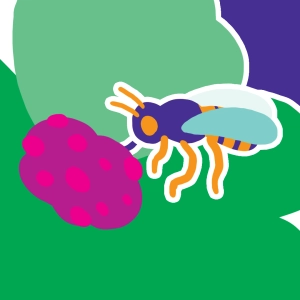 Pollination
Pollination
To ensure their sexual reproduction, most plants produce flowers. These contain the reproductive organs. But, in order to ensure genetic mixing, plants avoid self-fertilization.
But they are not able to move around. So how do they do it?
Well, they are assisted by the wind, and by insects or other animals.
(…)
The male components are grains of pollen, contained in the stamens. The female components are the ovules, well sheltered within the pistil.
(…)
In landing on a flower to collect nectar, an insect carries pollen that has most often come from another flower. This pollen is deposited on the stigma, the uppermost part of the pistil. This is pollination.
(…)
The ovule is located in the ovary, at the bottom of the stigma, far away from the stigma where the pollen grain was deposited. The pollen grain will produce a long tube down to the ovule, which it will then fertilize.
But what becomes of these organs after fertilization?
The ovule transforms itself into a seed that contains the embryo, surrounded by nutritional reserves that will be used at the time of germination. The rest of the flower dries up while the ovary transforms itself into a fruit.
(…)
Pollinating insects are indispensable for the reproduction of most fruit trees and food producing plants. Their disappearance would thus doom quite a number of plants to extinction.
